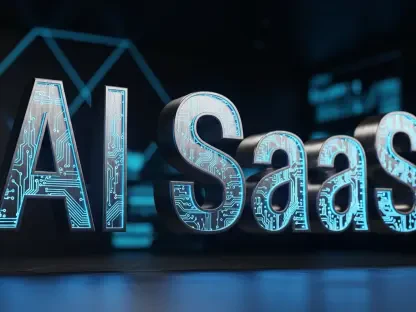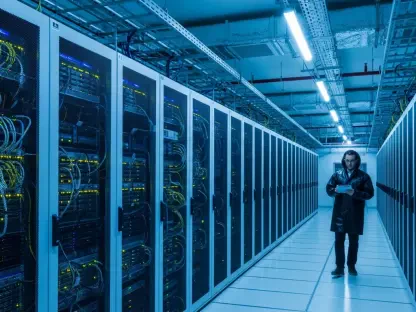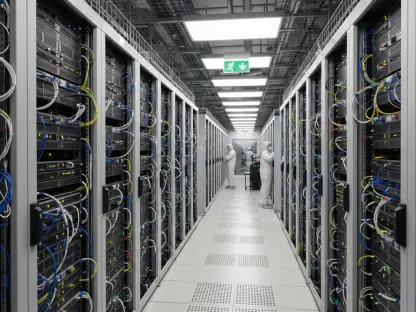I’m thrilled to sit down with Vijay Raina, a renowned expert in enterprise SaaS technology and software design. With his deep expertise in software architecture and thought leadership in the tech space, Vijay offers unique insights into the rapidly evolving world of AI and corporate strategies. Today, we’ll dive into key topics surrounding OpenAI’s financial trajectory, their ambitious infrastructure investments, growth projections, and strategic partnerships that are shaping the future of AI innovation.
How do you interpret OpenAI’s reported revenue figures, which are said to be significantly above $13 billion annually, and what does this suggest about their position in the AI industry?
OpenAI’s revenue surpassing $13 billion annually is a clear indicator of their dominance in the AI sector. It shows they’ve successfully monetized their offerings, likely through subscriptions like ChatGPT and enterprise solutions. This kind of financial performance positions them as a leader, not just in innovation but also in creating a sustainable business model in a field where many struggle to turn cutting-edge tech into profit. It suggests they’ve tapped into a massive demand for AI tools across industries, which is no small feat given the competition.
What’s your take on the public and media fascination with OpenAI’s financials, and why do you think it garners so much attention?
The obsession with OpenAI’s financials stems from the broader curiosity about AI’s commercial viability. People want to know if these huge investments in AI can actually pay off, especially with companies like OpenAI at the forefront. Their revenue numbers are a benchmark for the industry—success signals that AI isn’t just a tech fad but a transformative economic force. Plus, there’s a bit of drama in the narrative: massive spending versus revenue growth. It’s a high-stakes story that naturally draws eyeballs.
OpenAI has committed over $1 trillion to computing infrastructure over the next decade. How do you see them balancing such enormous investments with their revenue growth?
Balancing a trillion-dollar commitment with revenue growth is a tightrope walk, but OpenAI seems to be betting on scale. They’re likely anticipating exponential demand for AI services, which would justify the upfront costs for infrastructure. Their strategy might involve leveraging economies of scale—spreading those costs over a growing user base and diversifying revenue streams like cloud services or consumer products. It’s a risky play, but if their growth projections hold, it could solidify their market position. The key will be in optimizing resource allocation and ensuring they don’t overextend before the returns kick in.
What do you think are the biggest hurdles in securing enough computing resources for a company like OpenAI, and how might they address these challenges?
The biggest hurdle is the sheer scarcity of high-end computing resources—think GPUs and data centers—that AI models require. The global supply chain for these components is tight, and competition from other tech giants is fierce. OpenAI might address this through strategic partnerships with hardware providers or cloud giants, locking in long-term contracts to secure capacity. They could also invest in custom silicon or more efficient algorithms to reduce dependency on raw compute power. It’s a complex puzzle, but solving it is critical to their roadmap.
Looking at OpenAI’s growth projections, with talks of reaching $100 billion in revenue by 2027, what factors do you believe could drive such an ambitious target?
Hitting $100 billion by 2027 is ambitious, but not impossible if OpenAI capitalizes on a few key drivers. First, the continued adoption of tools like ChatGPT across consumer and enterprise markets could fuel steady subscription revenue. Second, expanding into AI cloud services positions them to compete with major players, tapping into a lucrative B2B market. Finally, their focus on niche applications—like AI for scientific automation—could open up high-value, untapped sectors. It’s about diversifying their portfolio while scaling their core offerings aggressively.
Can you elaborate on the potential of AI automating science, as OpenAI has highlighted, and what kind of real-world impact might this have?
AI automating science is a game-changer. Imagine algorithms that can design experiments, analyze data, or even hypothesize new theories at a pace humans can’t match. This could accelerate drug discovery, materials science, or climate modeling by orders of magnitude. For instance, AI could simulate thousands of chemical reactions overnight to find a new battery material. The impact would be profound—faster innovation, reduced R&D costs, and solutions to global challenges coming online sooner. It’s not just efficiency; it’s about unlocking discoveries that might take decades otherwise.
OpenAI’s partnership with Microsoft has been described as exceeding all expectations. From your perspective, how can such collaborations accelerate growth for an AI company?
Partnerships like the one with Microsoft are rocket fuel for AI companies. They provide access to vast resources—think cloud infrastructure, distribution networks, and technical expertise—that a standalone firm might take years to build. For OpenAI, Microsoft’s backing likely means faster scaling of their models through Azure’s compute power and broader market reach via Microsoft’s enterprise clients. These collaborations also de-risk some of the financial bets by sharing the burden of investment. It’s a symbiotic relationship where both sides amplify their strengths.
What’s one area in OpenAI’s strategy or innovation that you think showcases the unique value of their partnership with Microsoft?
I’d point to the integration of OpenAI’s models into Microsoft’s ecosystem, like embedding ChatGPT capabilities into tools like Office or Teams. This not only enhances Microsoft’s products but also exposes OpenAI’s tech to millions of users overnight. It’s a perfect example of how the partnership creates a multiplier effect—Microsoft’s platform amplifies OpenAI’s reach, while OpenAI’s innovation boosts Microsoft’s competitive edge. It’s a win-win that neither could achieve alone at this scale.
What is your forecast for the future of AI-driven companies like OpenAI in terms of balancing innovation with financial sustainability?
My forecast is cautiously optimistic. Companies like OpenAI are at the forefront of a tech revolution, but the path to financial sustainability will be bumpy. Innovation in AI is expensive—training models and building infrastructure eats up capital faster than most industries. I think the winners will be those who can diversify revenue early, whether through consumer apps, enterprise solutions, or niche verticals like healthcare or science. Partnerships will also be key to sharing costs and risks. Over the next decade, I expect a few dominant players to emerge, with OpenAI likely among them, provided they manage their burn rate and keep delivering value that justifies the investment. It’s a high-wire act, but the potential payoff is transformative.









